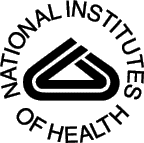| |
| |
| John K. Northup, Ph.D., Senior Investigator |
 |
Dr. Northup received his B.A. degree from Harvard College in 1973. He received his Ph.D. from Stanford University in 1978, where he studied the molecular basis of serotonergic neurotransmission in invertebrates with Tag Mansour. His postdoctoral research with Alfred G. Gilman at the University of Virginia established the molecular mechanisms for hormonal regulation of adenyl cyclase and identified the first G-proteins. He pursued investigations of the structural and mechanistic homology among the signal transducing G proteins in appointments in the Departments of Pharmacology at the University of Calgary and Yale University, where he held Alberta Heritage Foundation Scholar and American Heart Association Established Investigator Awards. Dr. Northup joined the Laboratory of Cell Biology within the NIMH in 1991 and then moved to the Laboratory of Cellular Biology within the NIDCD in 1997. His laboratory is investigating the unique mechanisms of signaling of the family3 G-protein-coupled receptors that play important roles in neurotransmission and chemosensory signaling.
|

|
Staff:
Research Interests:
The Section on Signal Transduction investigates the molecular bases for G-protein signaling with emphasis on sensory signaling processes. In addition to a diverse array of endocrine and neurotransmitter molecules, G-proteins are now known to mediate the signaling events initiating the visual and chemical senses. In the Signal Transduction Section we utilize recombinant expressed proteins and in vitro biochemical and biophysical methods to examine the selectivity and mechanisms of G-protein signaling at the molecular level. For mechanistic studies we have capitalized on the visual signaling models for G-proteins, since retinal sources provide abundant and homogeneous preparations not only of G-proteins but also their coupled receptors (rhodopsins), effectors (cyclic GMP phosphodiesterase and phospholipase C), as well as all of the necessary co-factors for efficient signaling. Using the visual proteins we have devised in vitro assay procedures for each known step in G-protein signaling, and we have adapted these procedures for in situ analysis of G-protein signaling using recombinant expressed receptors and G-protein subunits. We have also devised a method for directly measuring the protein-protein interactions of G proteins and receptors using surface plasmon resonance sensors. Our current research efforts are applying these approaches to the study of the chemical senses examining the molecular bases for taste, smell, and pheromone detection.
|
Selected Recent Publications:
Clark, W.C., Jian, X., Chen, L. and Northup, J.K (2001) Independent and Synergistic Binding of Retinal G Protein Subunits with Bovine Rhodopsin Measured by Surface Plasmon Resonance, Biochemical Journal 358, 389-397.
Full Text/Abstract
All Selected Publications
Contact Information:
Dr. John K. Northup
Signal Transduction Section
Laboratory of Cellular Biology
Building 10 Room 5D55A
10 Center Drive MSC 1419
Bethesda, MD 20892-1419
Telephone: (301) 402-4216 (office),
Email: drjohn@codon.nih.gov
|
|















